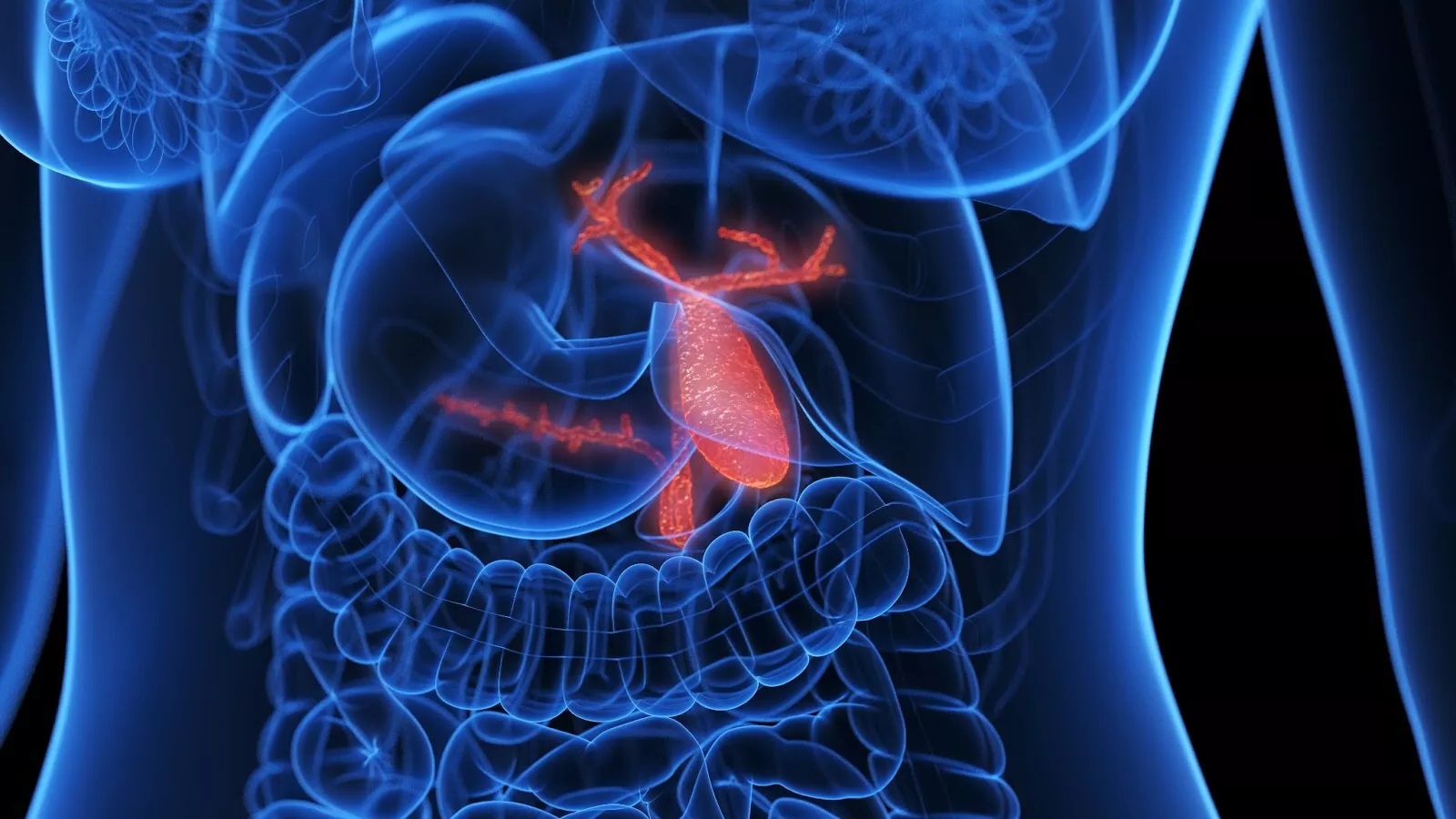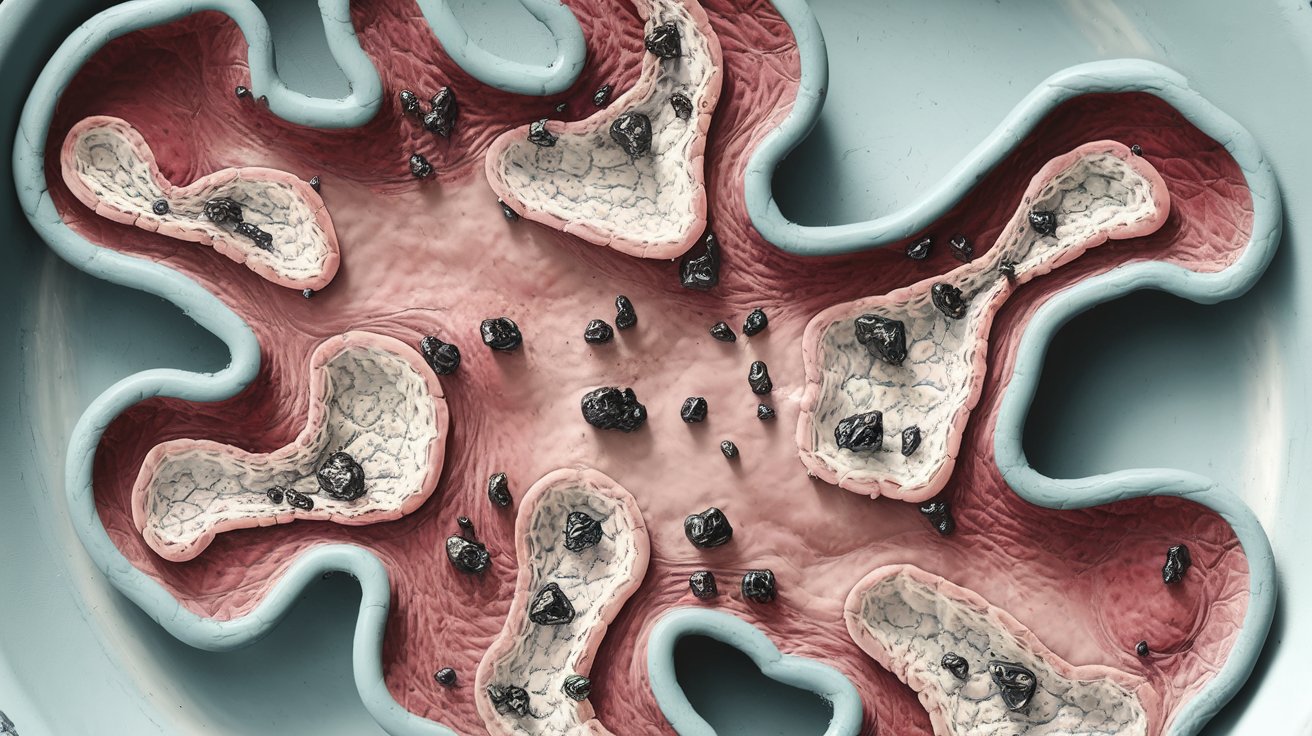
Cholecystitis is a condition that might sound complex, but understanding it can help you recognize its symptoms and seek timely treatment. This inflammation of the gallbladder can be acute or chronic, with gallstones being the primary culprit in most cases. Imagine experiencing sudden, sharp pain in your upper right abdomen, possibly radiating to your right shoulder. This could be a sign of acute cholecystitis. Risk factors include being female, older age, obesity, and even rapid weight loss. Knowing these facts can be crucial for managing and preventing complications. Let's dive into 50 essential facts about cholecystitis to keep you informed and prepared.
Key Takeaways:
- Cholecystitis is inflammation of the gallbladder, often caused by gallstones. Recognizing symptoms and seeking timely treatment is crucial for a good prognosis.
- The most common treatment for cholecystitis is laparoscopic cholecystectomy, which involves removing the gallbladder through small incisions. Lifestyle changes and managing risk factors can help prevent future episodes.
What is Cholecystitis?
Cholecystitis is a condition that affects the gallbladder, causing inflammation. This small organ, located under the liver, plays a crucial role in digestion. Understanding cholecystitis can help in recognizing symptoms and seeking timely treatment.
- Definition: Cholecystitis is inflammation of the gallbladder, which can be acute or chronic.
- Causes: The most common cause of cholecystitis is the presence of gallstones blocking the cystic duct, leading to inflammation.
- Gallstones: Gallstones are solid materials that can form in the gallbladder, and they are responsible for 90% of cases of cholecystitis.
- Acalculous Cholecystitis: This form of cholecystitis occurs without gallstones and is associated with conditions like major surgery, severe trauma, sepsis, and prolonged fasting.
Symptoms and Diagnosis
Recognizing the symptoms of cholecystitis is essential for early diagnosis and treatment. Here are some common signs and diagnostic methods.
- Symptoms: Common symptoms include right upper abdominal pain, pain radiating to the right shoulder, nausea, vomiting, fever, and chills.
- Acute Cholecystitis: This form of cholecystitis typically presents with sudden onset of symptoms and can lead to severe complications if not treated promptly.
- Chronic Cholecystitis: This form of cholecystitis involves repeated episodes of acute cholecystitis, leading to scarring and reduced gallbladder function.
- Risk Factors: Risk factors for cholecystitis include female sex, increasing age, obesity, rapid weight loss, pregnancy, oral contraceptives, and certain ethnic groups.
- Gallbladder Function: The gallbladder stores bile produced by the liver and releases it into the small intestine to aid in fat digestion.
- Bile Flow: Blockage of the cystic duct prevents bile from flowing out of the gallbladder, leading to inflammation and infection.
- Bacterial Infection: Bacteria such as E. coli, Klebsiella, Streptococcus, and Clostridium species can infect the gallbladder, exacerbating inflammation.
- Complications: Complications of cholecystitis include gangrene, gallbladder rupture, empyema, fistula formation, and gallstone ileus.
- Gangrene: This complication occurs when the gallbladder tissue dies due to lack of blood supply, often leading to perforation.
- Gallbladder Rupture: The gallbladder can rupture, spilling infected bile into the abdominal cavity, leading to peritonitis and severe infection.
- Empyema: This condition involves the accumulation of pus in the gallbladder, often requiring surgical drainage.
- Fistula Formation: A fistula is an abnormal connection between the gallbladder and another organ or the skin, which can lead to chronic infection.
- Gallstone Ileus: This complication occurs when a gallstone passes into the intestine and causes a blockage, leading to severe abdominal pain and vomiting.
- Rokitansky-Aschoff Sinuses: These are small pouches that form in the gallbladder wall due to chronic inflammation and can lead to further complications.
- Diagnosis: Diagnosis is typically made through ultrasound, which can show an enlarged, immobile gallbladder and signs of inflammation.
- Ultrasound Findings: Ultrasound may reveal a thickened gallbladder wall, pericholecystic fluid, and sometimes stones or sludge within the gallbladder.
- Cholescintigraphy: This test involves injecting a substance into the vein to visualize the gallbladder and detect blockages.
- Blood Tests: Blood tests may show elevated white blood cell count and liver enzymes, indicating inflammation and infection.
- CT Scan: A CT scan can provide detailed images of the gallbladder and surrounding tissues, helping to identify complications like gangrene or perforation.
Epidemiology and Statistics
Cholecystitis affects many people worldwide. Understanding its prevalence and impact can help in recognizing its significance.
- Epidemiology: Cholecystitis accounts for 3-10% of cases of abdominal pain worldwide and is more common in people aged 50-69 years old.
- Mortality Rate: The mortality rate for cholecystitis is low, but complications can increase the risk of death. In the US, the mortality rate was 0.7 per 100,000 people in 2012.
- Emergency Department Visits: Cholecystitis caused an estimated 651,829 emergency department visits and 389,180 hospital admissions in the US in 2012.
- Symptom Duration: Symptoms of acute cholecystitis typically last from 30 minutes to 2-3 days, but can be severe and prolonged in some cases.
- Pain Characteristics: Pain often begins in the epigastric region and localizes to the right upper quadrant (RUQ), radiating to the right shoulder or scapula.
- Nausea and Vomiting: Nausea and vomiting are common symptoms, often accompanied by fever and chills.
- Fever and Chills: Fever and chills are indicative of bacterial infection and inflammation.
- Physical Examination: Physical examination may reveal fever, tachycardia, and signs of peritoneal irritation like tenderness in the RUQ or epigastric region with guarding or rebound.
- Jaundice: Jaundice can occur in some cases, especially in acalculous cholecystitis, where bile flow is severely impaired.
- Special Populations: Elderly patients may present with vague symptoms like fatigue and weakness without fever, while children may not exhibit classic findings and are at higher risk due to underlying conditions like sickle cell disease.
Treatment and Management
Treating cholecystitis involves various approaches, from surgery to lifestyle changes. Knowing the options can guide patients and caregivers.
- Treatment Options: The most appropriate treatment for cholecystitis is laparoscopic cholecystectomy, which involves removing the gallbladder through small incisions.
- Surgical Approach: Laparoscopic cholecystectomy has low morbidity and mortality rates, quick recovery times, and good results compared to open surgery.
- Conservative Management: In some cases, conservative management may be necessary, involving antibiotics and supportive care to manage symptoms until surgery can be performed.
- Antibiotics: Antibiotics are often prescribed to treat bacterial infections and reduce inflammation.
- Supportive Care: Supportive care includes managing pain, nausea, and vomiting with medications and fluids.
- Chronic Management: For chronic cholecystitis, management focuses on pain relief and preventing further episodes through lifestyle changes and medications.
- Lifestyle Changes: Lifestyle changes such as maintaining a healthy weight, avoiding rapid weight loss, and managing risk factors like diabetes can help prevent cholecystitis.
- Medications: Medications like ursodeoxycholic acid (UDCA) may be prescribed to dissolve small stones and reduce inflammation.
- Risk Factors Management: Managing risk factors such as obesity, diabetes, and certain medications can reduce the likelihood of developing cholecystitis.
Special Considerations
Certain groups and conditions can increase the risk of cholecystitis. Awareness of these factors can aid in prevention and early intervention.
- Ethnicity and Cholecystitis: Certain ethnic groups are at higher risk for developing cholecystitis, including Native North Americans.
- Pregnancy and Cholecystitis: Pregnancy increases the risk of developing cholecystitis due to hormonal changes and increased bile production.
- Oral Contraceptives and Cholecystitis: The use of oral contraceptives increases the risk of developing gallstones and subsequently cholecystitis.
- Obesity and Cholecystitis: Obesity is a significant risk factor for developing gallstones and cholecystitis due to increased cholesterol levels in bile.
- Rapid Weight Loss and Cholecystitis: Rapid weight loss can lead to gallstone formation and increase the risk of developing cholecystitis.
- Diabetes and Cholecystitis: Diabetes mellitus increases the risk of developing gallstones and cholecystitis due to metabolic changes.
- Acalculous Cholecystitis Causes: Acalculous cholecystitis is associated with conditions like major surgery, severe trauma, sepsis, long-term total parenteral nutrition (TPN), and prolonged fasting.
- Prognosis: The prognosis for uncomplicated cholecystitis is excellent, but complications like gangrene or perforation significantly worsen the outcome, leading to higher morbidity and mortality rates.
Final Thoughts on Cholecystitis
Cholecystitis, an inflammation of the gallbladder, can be a serious condition if not treated promptly. Knowing the causes, symptoms, and risk factors is crucial for early detection and effective management. Gallstones are the primary culprits, but other factors like major surgery, severe trauma, and prolonged fasting can also lead to this condition. Symptoms often include right upper abdominal pain, nausea, vomiting, fever, and chills. Diagnosis typically involves ultrasound and blood tests, while treatment ranges from antibiotics and supportive care to surgical removal of the gallbladder. Lifestyle changes, such as maintaining a healthy weight and managing diabetes, can help prevent cholecystitis. Understanding these key points can make a significant difference in managing and preventing this condition, ensuring better health outcomes for those affected. Stay informed and proactive in your health to avoid complications.
Frequently Asked Questions
Was this page helpful?
Our commitment to delivering trustworthy and engaging content is at the heart of what we do. Each fact on our site is contributed by real users like you, bringing a wealth of diverse insights and information. To ensure the highest standards of accuracy and reliability, our dedicated editors meticulously review each submission. This process guarantees that the facts we share are not only fascinating but also credible. Trust in our commitment to quality and authenticity as you explore and learn with us.


